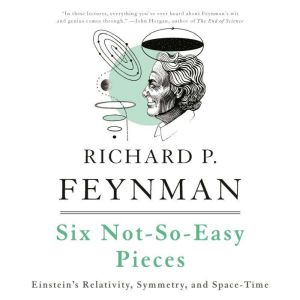

Six Not-So-Easy Pieces
Einstein's Relativity, Symmetry, and Space-Time
Author: Richard P. Feynman
Narrator: Richard P. Feynman
Unabridged: 5 hr 26 min
Format: Digital Audiobook Download
Publisher: Basic Books
Published: 07/15/2025
Categories: Nonfiction, Science, Physics
Synopsis
No one — not even Einstein himself — explained these difficult, anti-intuitive concepts more clearly, or with more verve and gusto, than Feynman. Filled with wonderful examples, Six Not-So-Easy Pieces is the ideal introduction to the fundamentals of physics by one of the most admired and accessible physicists of all time.
“There is no better explanation for the scientifically literate layman.” –Washington Post Book World

